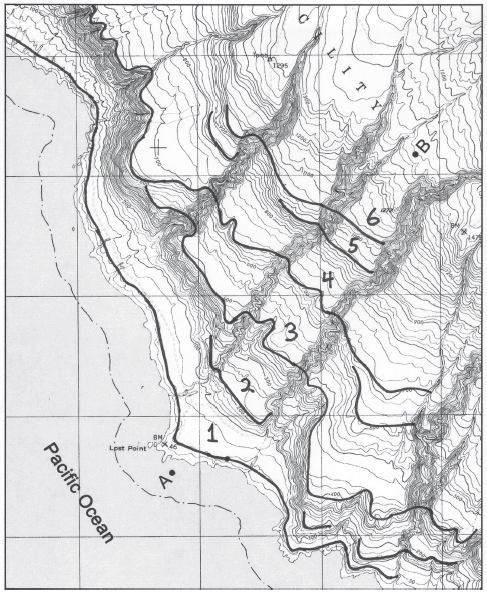Uranus is famous for its large red circle called the Great Red Spot
Indicate whether this statement is true or false.
Answer: FALSE
You might also like to view...
Do all of the terraces shown on your topographic profile extend, without interruption, to the southeast and northwest along this side of the island?
The following questions are based on Figure 49-8, a portion of the “San Clemente Island Central, California” quadrangle shown on the following page (scale 1:24,000; contour interval 25 feet; index contours drawn every fourth line; to view this map in color, go to the Lab Manual website or scan the QR code for this exercise), and the stereogram of San Clemente Island (Figure 49-7). The map and stereogram show a series of marine terraces on San Clemente Island in southern California (32°51"08"N, 118°29'58"W). The terraces have been incised by streams in several places.

Figure 49-8: USGS “San Clemente Island Central, California” quadrangle (scale 1:24,000; contour interval 25 feet; note that the index contours on this map have been drawn every fourth line;cN)
The Scripps Institute of Oceanography and the Woods Hole Oceanographic Institute are important examples of prominent oceanographic institutions in the United States
Indicate whether the statement is true or false
The compositions of the planets
A. are all very similar, so other planets may be able to support life or provide needed resources. B. were determined by the distance from the sun at which each formed, except for the largest planets. C. are entirely unknown; geologists cannot judge their similarity to earth. D. were originally all the same but have been changed by radiation from the sun over the life of the solar system.
Secondary pollutants
A. Become dangerous after reacting in the atmosphere B. Harm only vulnerable members of a population C. Are classified by the EPA as the second-most dangerous and abundant D. Are produced in lesser quantities than primary pollutants E. Are less dangerous than other pollutants